In the following code, I'm trying to show for each feature of a dataframe, its relation with the rest of features.
Thus, using Peter Haschke's multiplot approach, I've been able to show all the combinations.
suppressMessages(require(ggplot2))
suppressMessages(require(grid))
multiplot <- function(..., plotlist = NULL, file, cols = 1, layout = NULL) {
plots <- c(list(...), plotlist)
numPlots = length(plots)
if (is.null(layout)) {
layout <- matrix(seq(1, cols * ceiling(numPlots/cols)),
ncol = cols, nrow = ceiling(numPlots/cols))
}
if (numPlots == 1) {
print(plots[[1]])
} else {
grid.newpage()
pushViewport(viewport(layout = grid.layout(nrow(layout), ncol(layout))))
for (i in 1:numPlots) {
matchidx <- as.data.frame(which(layout == i, arr.ind = TRUE))
print(plots[[i]], vp = viewport(layout.pos.row = matchidx$row,
layout.pos.col = matchidx$col))
}
}
}
df <- data.frame(matrix(rnorm(400), nrow=100))
colnames(df) <- c("F1","F2","F3","F4")
pdf("example.pdf")
plots <- list()
count <- 1
for(i_feature in colnames(df)) {
for(j_feature in colnames(df)) {
if(i_feature == j_feature) {
empty_df <- data.frame()
blank_plot <- ggplot(empty_df) +
geom_point() +
xlim(0, 100) +
ylim(0, 100) +
theme(panel.grid.major = element_blank(),
panel.grid.minor = element_blank(),
axis.ticks=element_blank(),
axis.text.x=element_blank(),
axis.text.y=element_blank(),
axis.title.x=element_blank(),
axis.title.y=element_blank()
)
blank_plot <- blank_plot + geom_text(aes(x=45,y=50,label=j_feature), size=6,fontface="bold")
plots[[count]] <- blank_plot
} else {
plots[[count]] <- ggplot(df,aes_string(x=i_feature,y=j_feature)) +
geom_point(size = 1) +
theme(panel.grid.major = element_blank(),
panel.grid.minor = element_blank(),
axis.ticks=element_blank(),
axis.text.x=element_blank(),
axis.text.y=element_blank(),
axis.title.x=element_blank(),
axis.title.y=element_blank()
) +
theme(legend.position="none")
}
count <- count + 1
}
}
multiplot(plotlist = plots, cols = ncol(df))
garbage <- dev.off()
As you can see, instead of plotting one column against itself, I show a label with the name of the column. The problem with this implementation is that this line:
blank_plot <- blank_plot + geom_text(aes(x=45,y=50,label=j_feature), size=6,fontface="bold")
doesn't properly refresh the label name, so the last feature to be processed, is the one that is shown always, as can be seen in the screenshot.
Can anybody help me to solve this issue?

